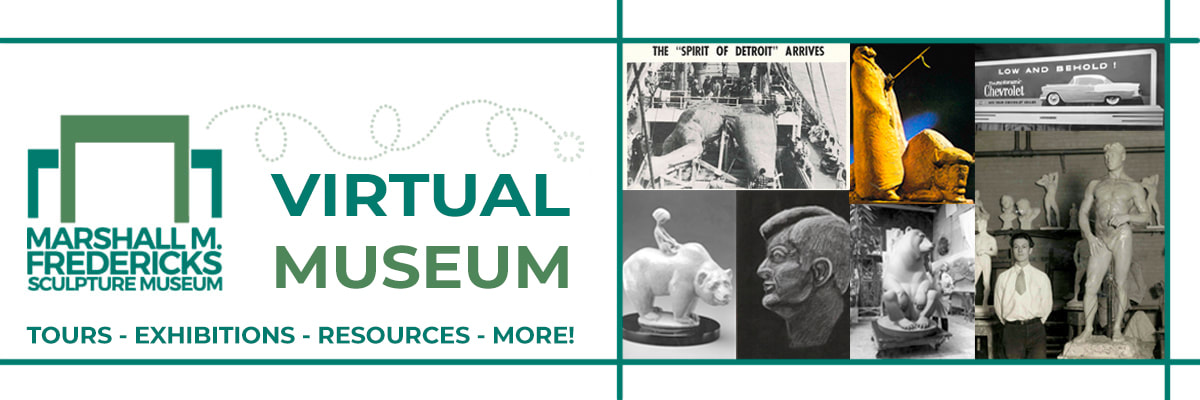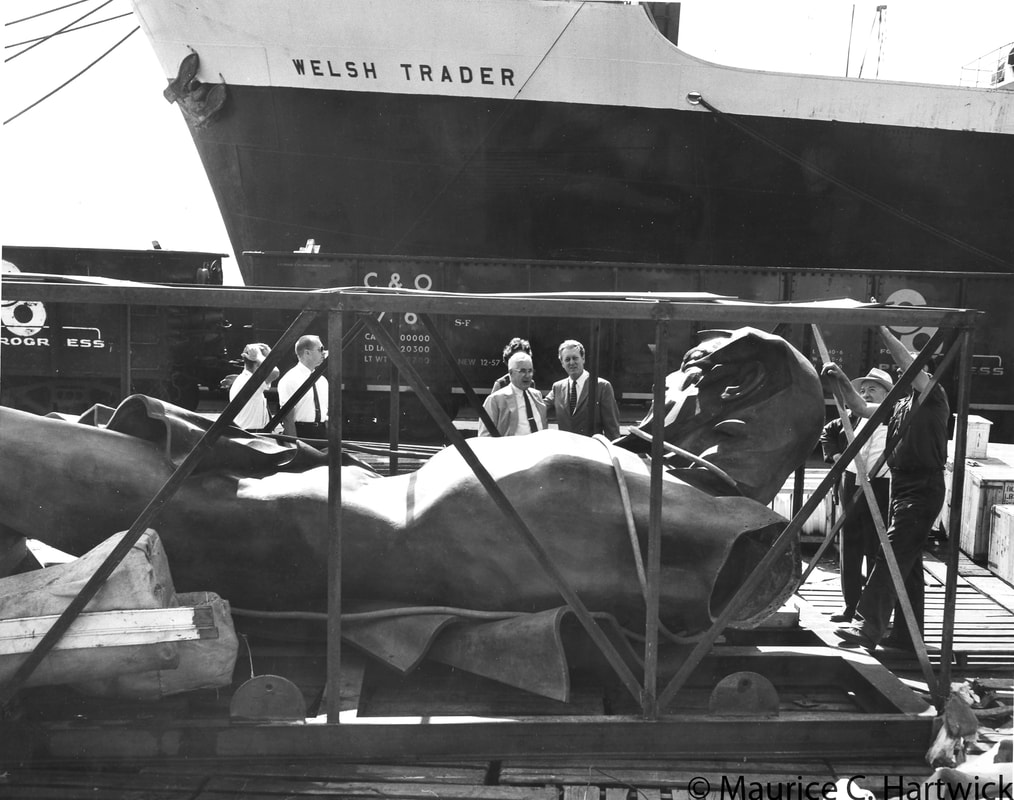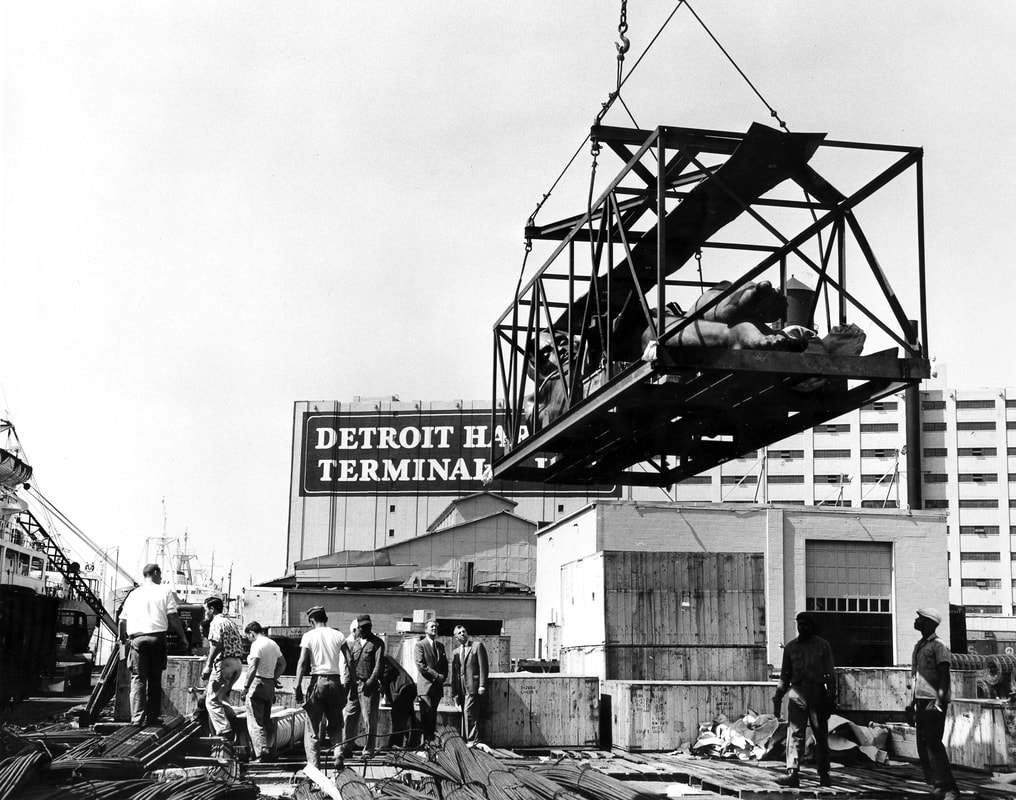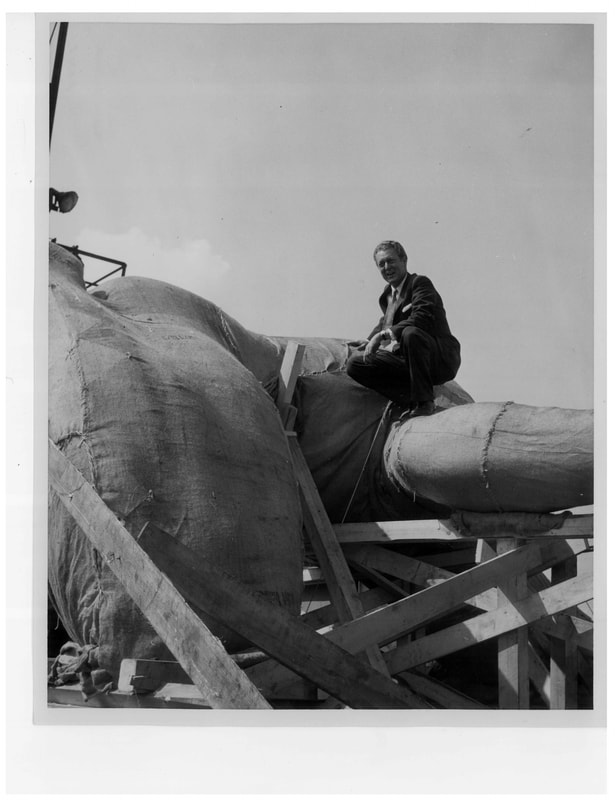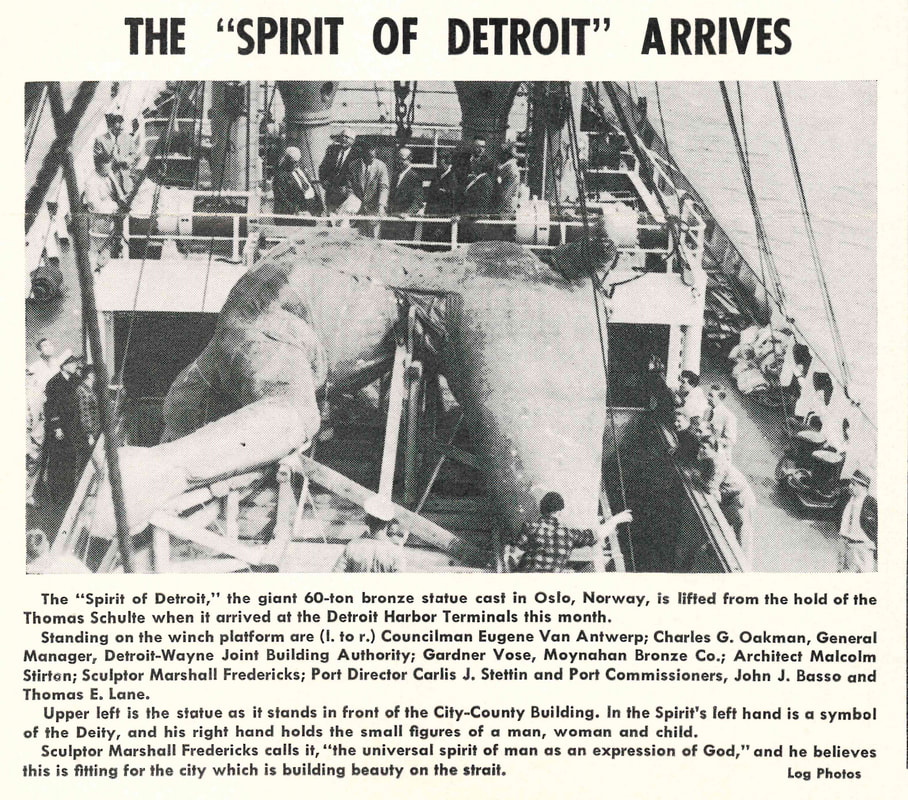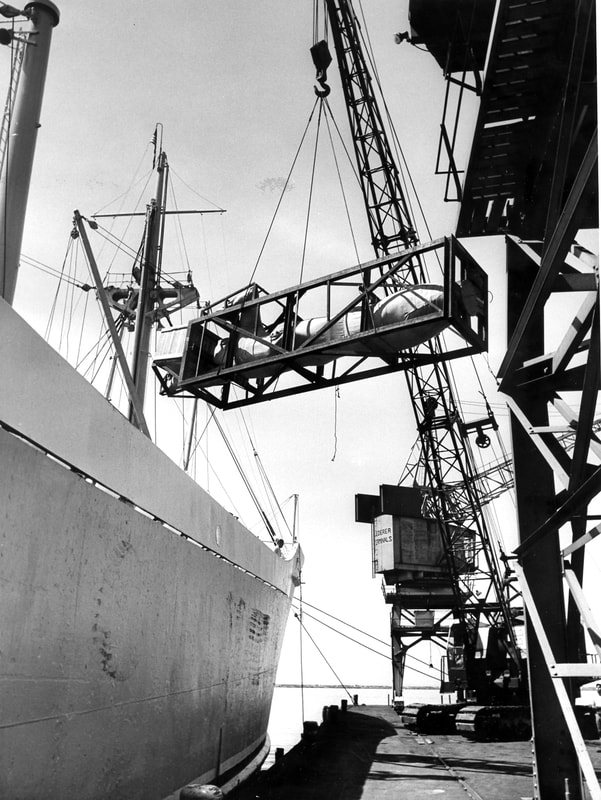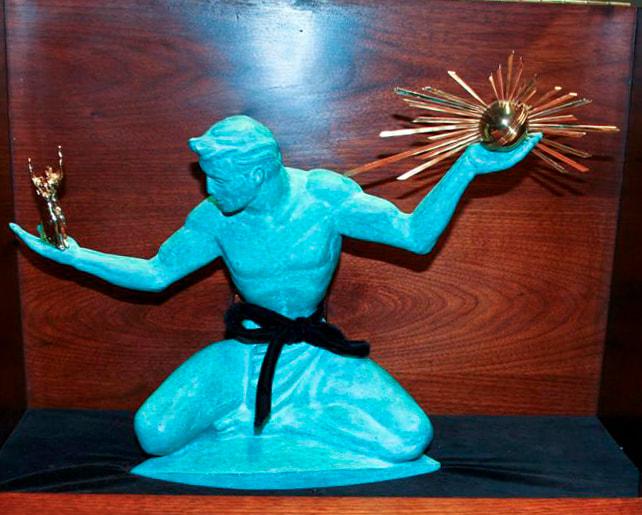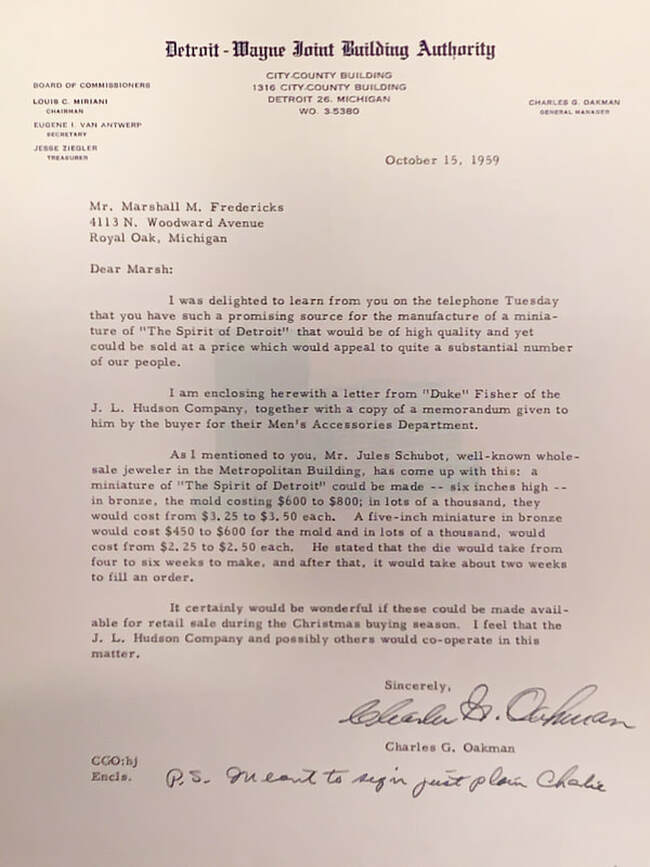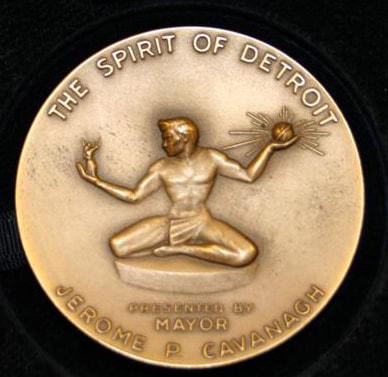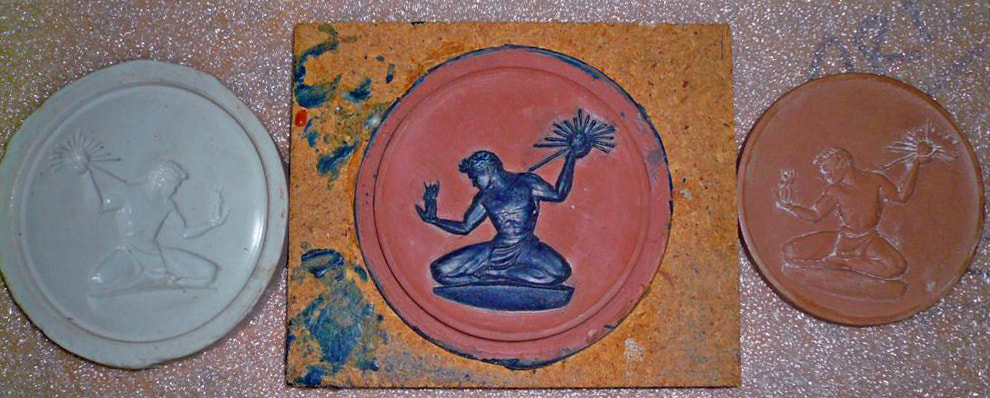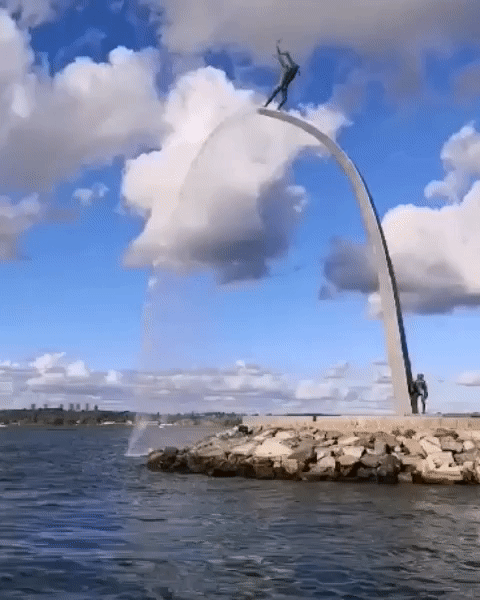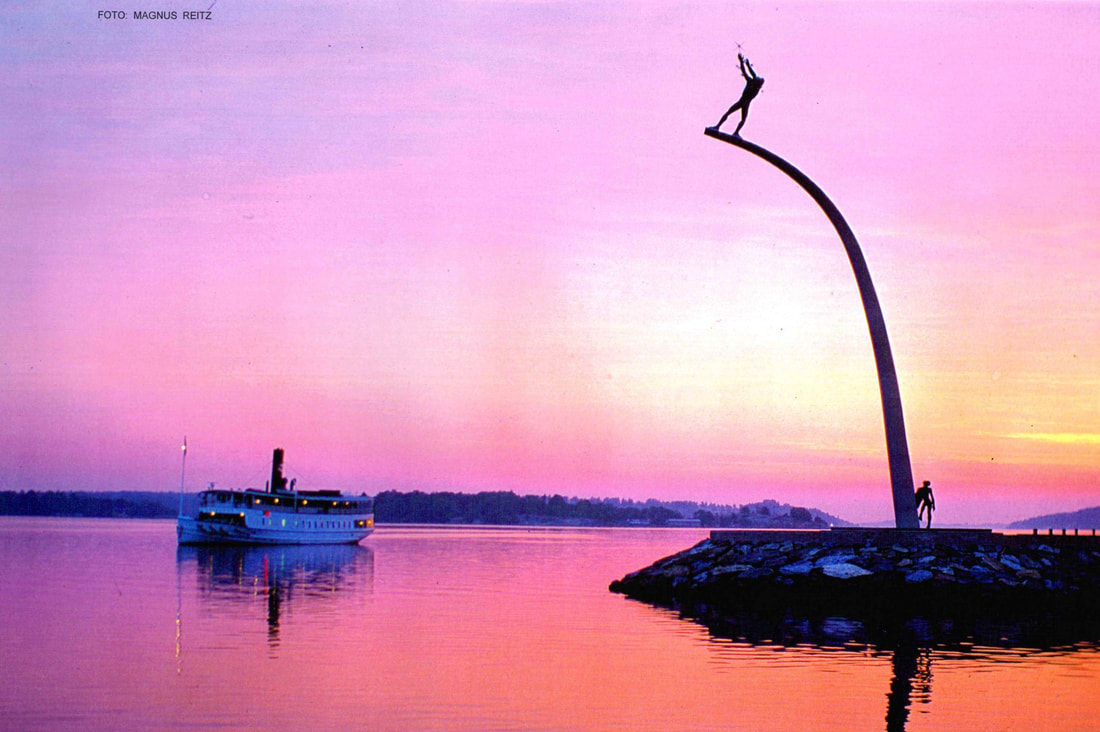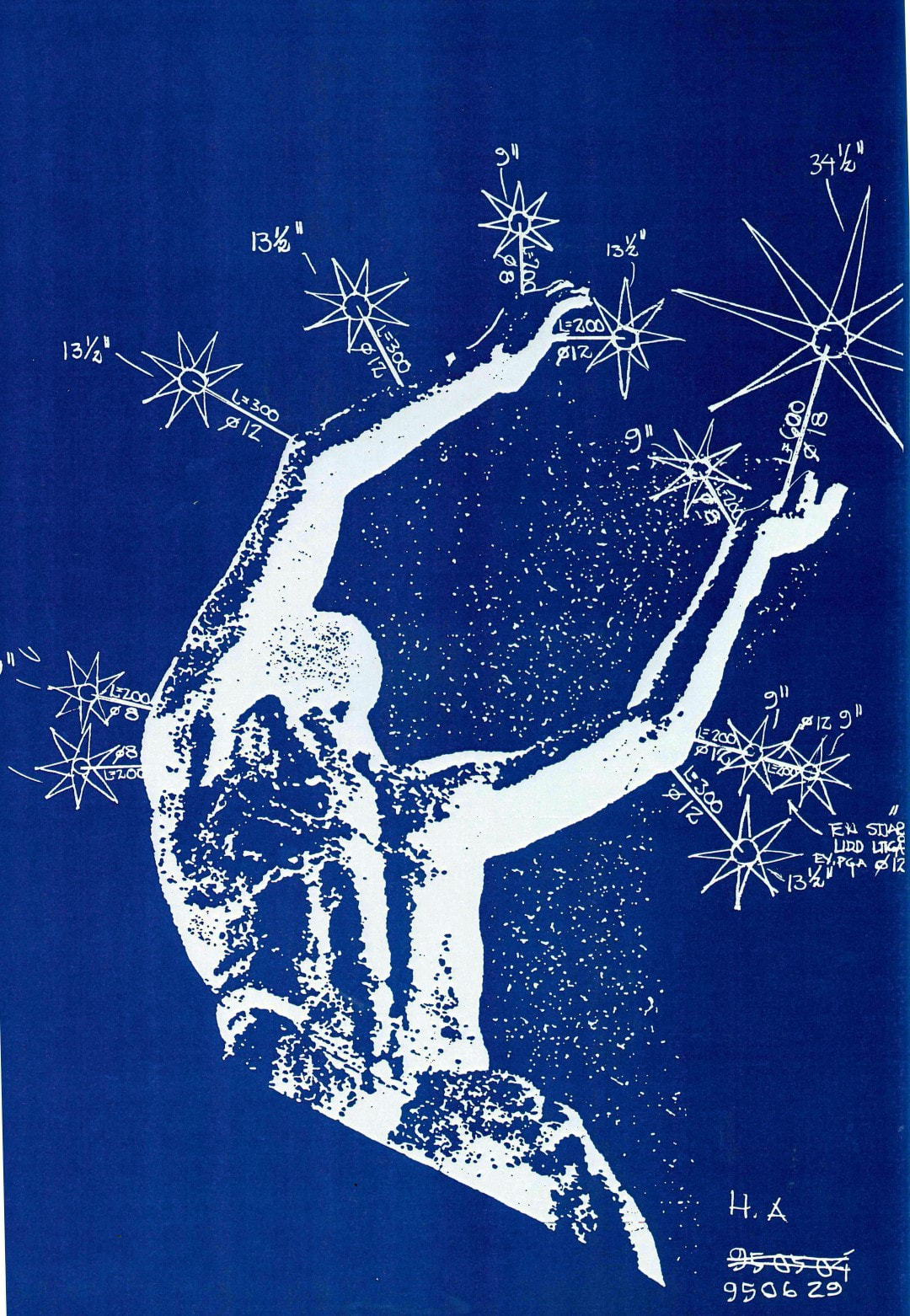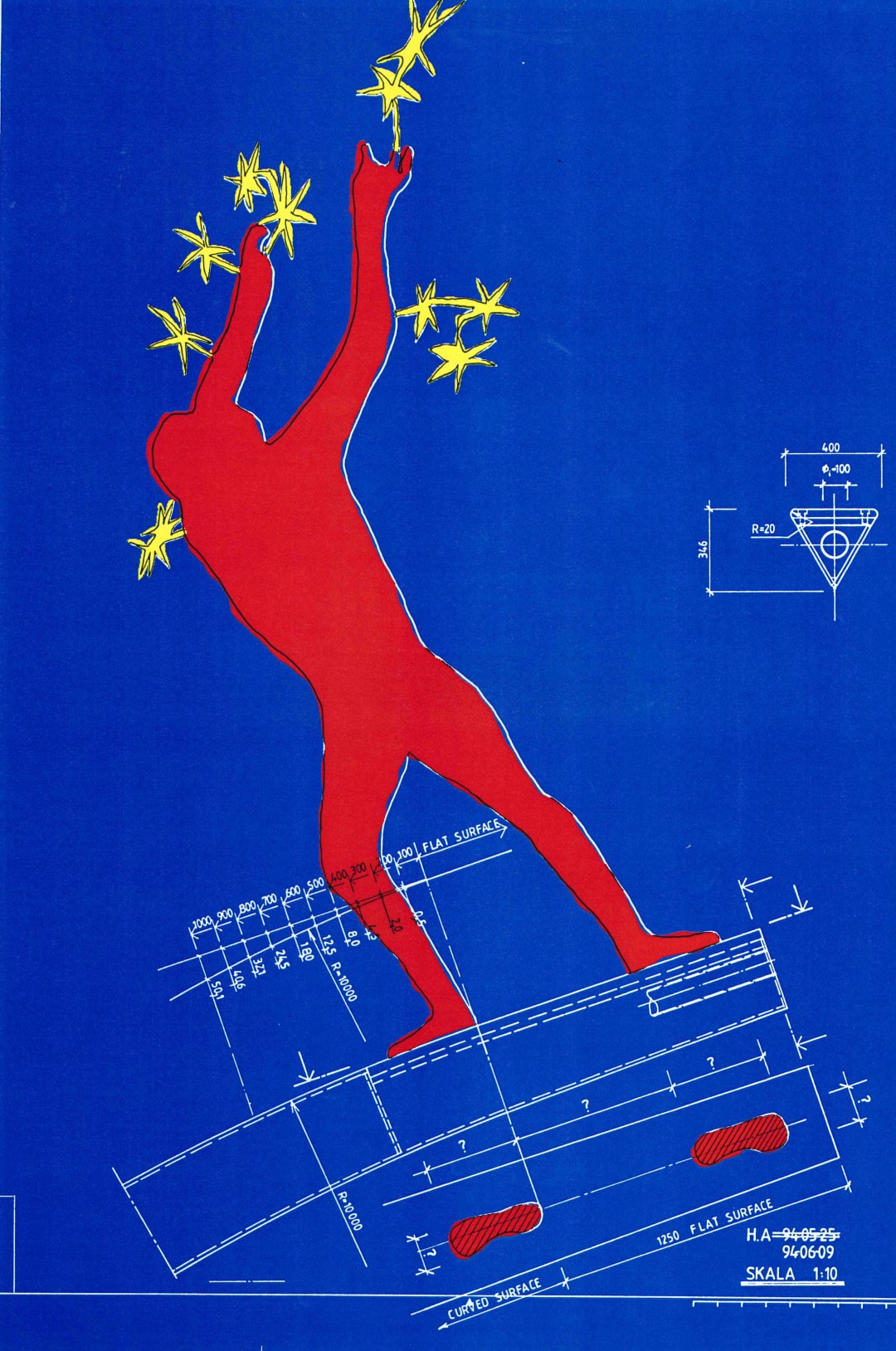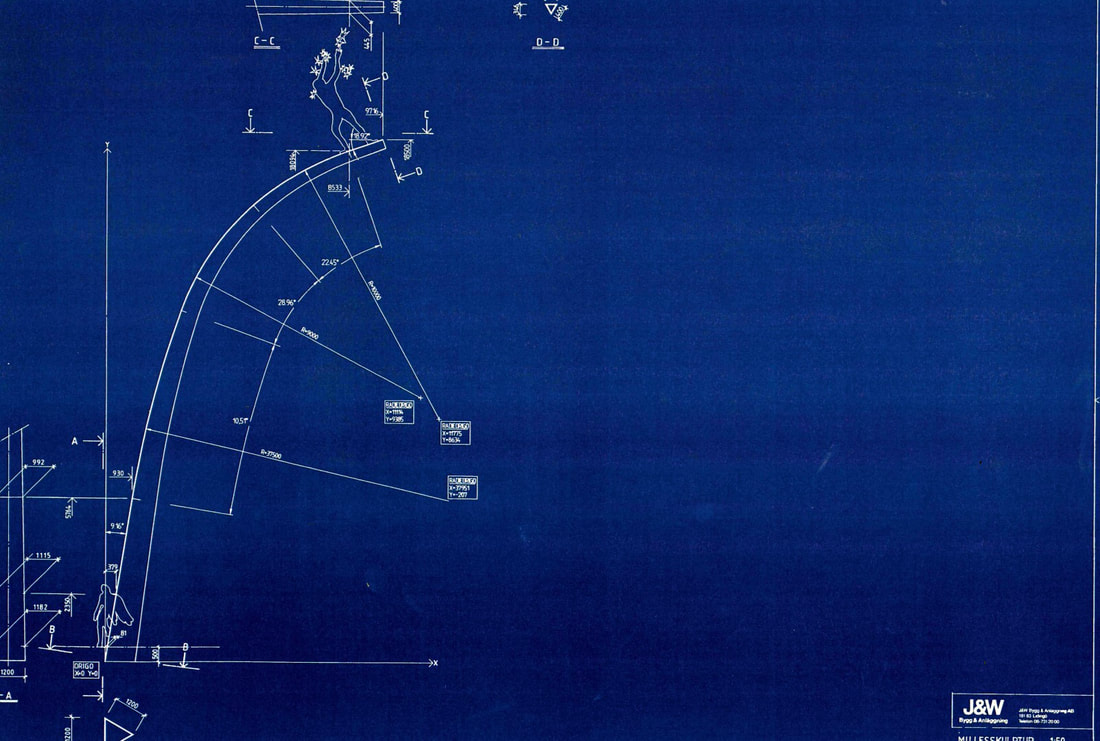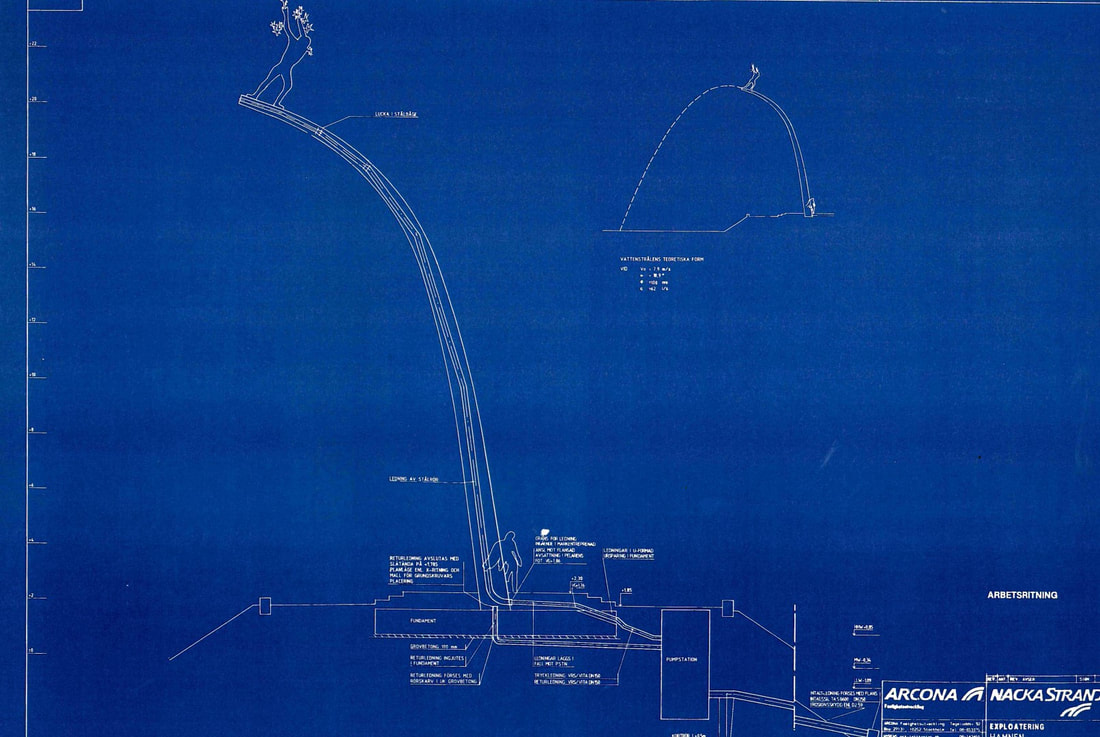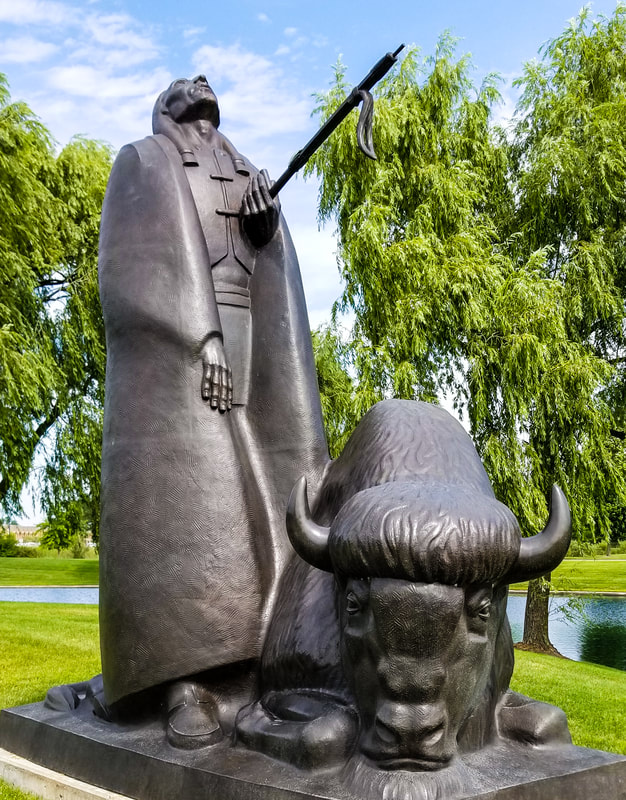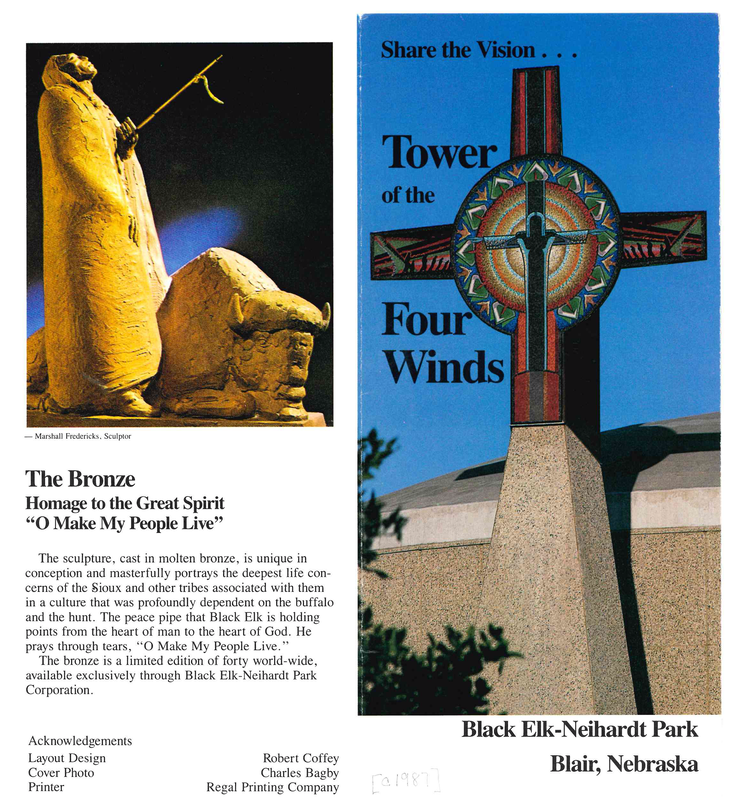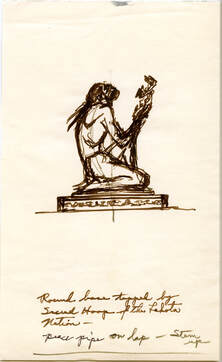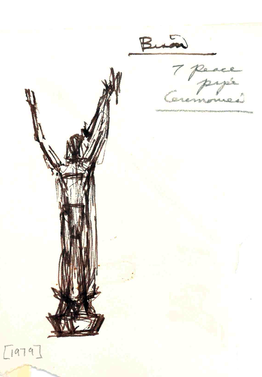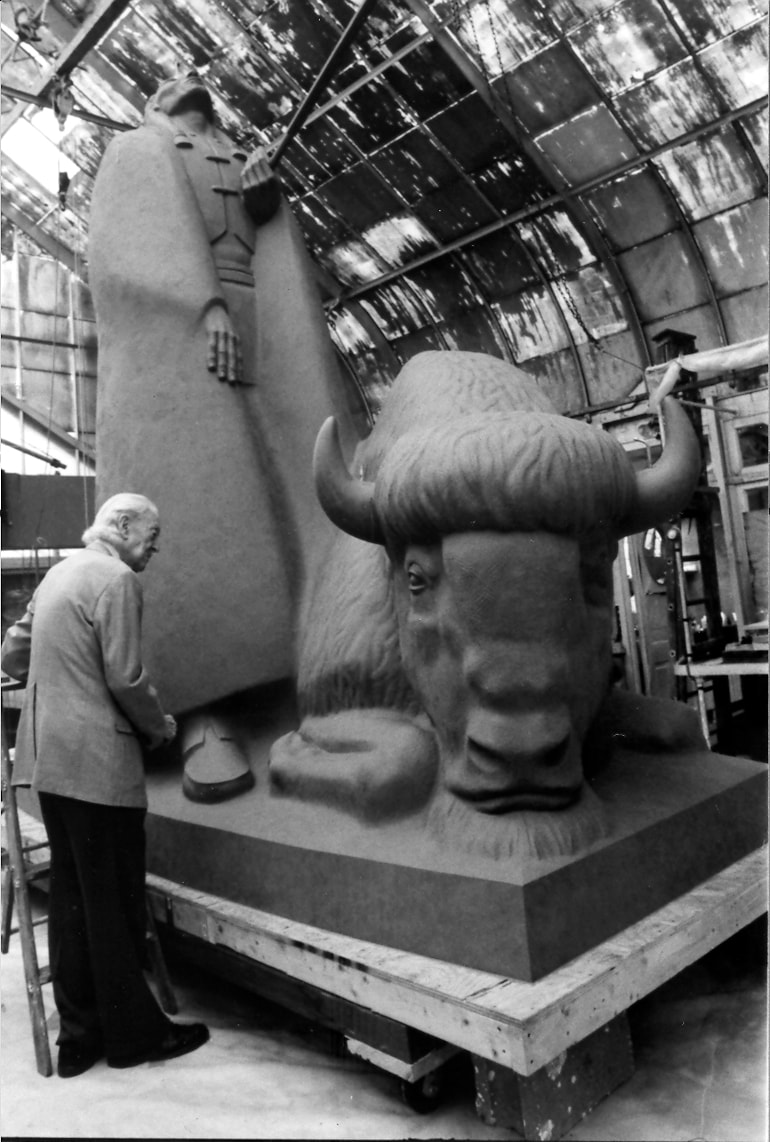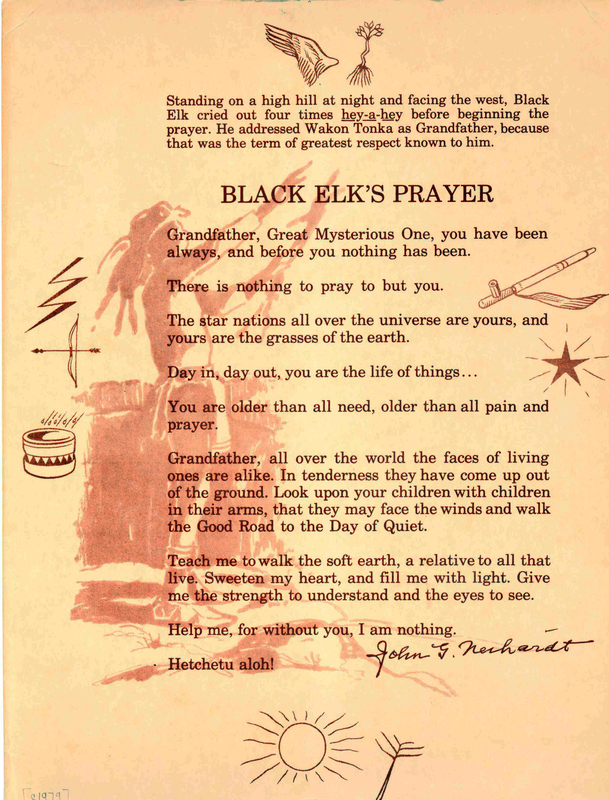MARSHALL FREDERICKS ONLINE EXHIBITIONS
|
Three of the largest sculptures created by Marshall Fredericks were cast in Norway. The Spirit of Detroit, The Cleveland War Memorial and Christ on the Cross were all cast in Oslo. The three giant sculptures were shipped by boat to the USA once completed. These three large sculptures were cast by the Norwegian foundry Kristiania Kunst & Metalstoberi in Oslo. Fredericks would ship his finished plaster models to the foundry from his studio, and frequently travel to Norway to oversee the projects progress. These large works each took about a year to complete. Christ on the Cross left Norway on June 20, 1956 bound for Detroit. The 30-foot sculpture arrived on July 18 aboard the Norwegian freighter Lyngenfjord. It arrived a the Port of Detroit and was loaded onto a truck to make its long journey to Indian River, Michigan. The sculpture cost $11,000 to cast and an additional $2,000 to ship to Detroit. The sculpture was dedicated on August 16, 1959. The Spirit of Detroit arrived in the Port of Detroit on September 20, 1958 at 6:55 AM. The Thomas Schulte German motor ship carried the sculpture to Detroit from Norway along with other cargo. The sculpture was buried in the bottom of the ship. Sitting on top were cans of sardines, herring, olive oil, and Mercedes Benz automobiles destined for the USA. At about 10:30 AM the sculpture was finally visible and hooked to a giant crane. At 11:20 AM the sculpture was hoisted and five minutes later placed on Detroit soil. Marshall Fredericks was on site taking photographs of the momentous occasion. A witness to the giant sculpture being unloaded from the ship said "it looks like the world's biggest, lumpiest burlap bag". The Cleveland War Memorial was also cast in Norway. The 35 foot tall central figure arrived on May 8, 1964 from Norway at the Lederer Terminal on 9th Street in Cleveland, Ohio aboard the freighter Lyngenfjord. The same freighter carried the Christ on the Cross in 1956.
The sculpture was cast at a cost of $21,000 plus $2,500 shipping, and the giant crate alone cost and additional $3,000. The sculpture was installed and dedicated on May 30, 1964.
0 Comments
This year we have a special project that needs your support – the conservation of Marshall’s one-of-a-kind sculpture: "Youth in the Hands of God Seeking Knowledge”. Watch the video to learn more about the history and need for conservation of "Youth in the Hands of God Seeking Knowledge”. Please donate at https://mfsm.svsu.edu/mfsm/zcart/donation_form.html, designating “Special Appeal (Conservation & Preservation)" on your donation form. Thank you in advance for your support of this important project to conserve and preserve Marshall Fredericks work! When Marshall Fredericks's iconic sculpture The Spirit of Detroit was unveiled on September 23, 1958 demand for memorabilia related to the sculpture commenced. Companies, individuals, and even politicians all wanted to own a small trinket to show their love and admiration for The Spirit of Detroit, and perhaps some even sought to make a profit off of the sculpture's image. Today it's rare to see anything released without careful marketing planning for the product. Memorabilia is often manufactured and sold well ahead of the products release. This was not the case with The Spirit of Detroit. When The Spirit of Detroit arrived by ship from Norway in 1958, four miniature replicas were also aboard. These were cast for Detroit V.I.P's and not offered for sale. Hundreds attended the sculpture's dedication on September 23, 1958, but there were no trinkets, replicas, or souvenirs available to the crowd. Shortly after The Spirit of Detroit was installed letters began to arrive asking Marshall Fredericks how to get products related to The Spirit of Detroit into their hands and onto their shelves, and who would manufacture them. In the letter below, dated October 15, 1959, to Marshall Fredericks from Charles Oakman, General Manager of the Detroit-Wayne Joint Building Authority, the cost of creating inexpensive replicas is discussed. Also in the letter The J.L. Hudson Company expresses their desire to have the replicas on their shelves in time for the Christmas season even though the process for creating the small sculptures would take 6-8 weeks. An October 2, 1959 letter to The J.L. Hudson Company states that a manufacturer in Italy could make small replicas of The Spirit of Detroit for only $10.00 each, and yet another manufacturer could produce key chains for $1.00 each. Hudson's was working against the clock to bring the sculpture's likeness to their stores for the Christmas season, but they were eager to do so. However, in another letter from October 13, 1959, the Hudson's Men's Department buyer seems concerned that the sales demand for replicas might not be that high. The stores would not receive any objects for their holiday shoppers to purchase that year. After the Christmas season ended demand was still high for a replica. A letter dated December 30, 1959 to Marshall Fredericks mentions a request from the Women's Advertising Club. They wanted a Spirit of Detroit replica for their upcoming January meeting. It wouldn't be until several years later before the likeness of the sculpture was actually crafted into an object of memorabilia. Finally, 7 years after the sculpture was installed the Mayor of Detroit, Jerome P. Cavanagh, acquired small medallions from Fredericks with The Spirit of Detroit's likeness to present to distinguished visitors to the city. These medallions were the first souvenirs created with a representation of the popular sculpture. The medallion is mentioned in an April 26, 1965 letter. The letter also states that the demand for miniature sculptures is still on the minds of the citizens of Detroit. Finally a letter of desperation dated May 13, 1965 is written to Fredericks. Seven years have passed since the sculpture was installed, and there is still demand for replicas, but nothing has been created for the public to buy. The letter says the city is "lacking in civic pride" for not making replicas available. The people think enough time has passed, and perhaps it's time to get the Japanese involved to manufacture them cheaply and in bulk. Eventually small replicas created from Fredericks's original molds would be crafted by top bronze casting foundries. Although these were not cheap, they were regraded by Fredericks to be of the finest quality available. They were presented to Presidents and leaders such as President Richard Nixon, President Lyndon Johnson, President Dwight Eisenhower, Mayor Nishiyama of Toyota City, Japan and King Carl XVI Gustaf of Sweden. Once in a great while one of these small Spirit of Detroit replicas comes up at auction. The last one that sold at auction was in 2017. The final hammer price was $34,000. Today it's hard not to see The Spirit of Detroit's iconic image in the city of Detroit. Its likeness has been interpreted, marketed and used in just about any and every way imaginable. Detroiters from the 1950s and 60s would be astounded to see the array of products produced with the sculpture's likeness. T-shirts, magnates, greeting cards, beer cans, pop bottles, stickers, jewelry, tattoos, snow-globes, art, and hundreds of other trinkets and objects of memorabilia are available today. Follow the Instagram hashtag #spiritofdetroit to see the many creative ways The Spirit of Detroit has become the symbol for The Motor City. By: Geoffe Haney ~ Collections Manager
Carl Milles created the sketch model for the sculpture God Our Father on the Rainbow in 1946. The sculpture was Milles's idea for a fountain to be located in front of the United Nations building in New York City. The fountain would have cascaded into the East River. The UN building began construction on the building in 1947, and opened in 1952. After Milles passed away in 1955 the idea was scrapped. In 1995 Marshall Fredericks received a commission to build the sculpture in Nacka Strand, Sweden, a suburb of Stockholm. Fredericks, then age 87, took the commission to honor his mentor and friend Carl Milles. Fredericks created the sculpture from the original Milles model. The monumental 60 foot sculpture was finished in 1995. Below are the rarely seen site blueprints for the project from the Marshall M. Fredericks Sculpture Museum Archives. Further reading: Carl Milles’ Playing Angels: A Slice of Sweden in Philadelphia By: Geoffe Haney ~ Collections Manager
Have you visited the sculpture of Black Elk: Homage to the Great Spirit in the Museum's sculpture garden? The beautiful 13-foot-tall bronze sculpture of Black Elk depicts the Oglala Lakota Sioux holy man with a bison by his side while he offers his peace pipe from the heart of man to the heart of God. This Marshall Fredericks masterpiece has garnered a lot of interest lately. When Marshall Fredericks was a young boy his family traveled to areas in the Midwest habited by Lakota Sioux Native Americans. A young Fredericks went to school with Native American children and was infatuated with their culture and philosophies. He learned about their ties to nature and animals. That bond would stay with young Fredericks throughout his life and influence his sculpture. "Black Elk Speaks", written by John G Neihardt in 1932, was a favorite book of Fredericks, always on his nightstand, and provided much inspiration to him throughout his life. When Neihardt died in 1973 a 44-foot-tall cross memorial was erected in honor of both Neihardt and Black Elk. The memorial, Black Elk/Neihardt Park, The Tower of the Four Winds. Is located in Blair, Nebraska. In 1978 Marshall Fredericks was asked to create a sculpture of Black Elk to help a fundraising campaign to add a beautiful mosaic to the 44-foot-tall cross monument. About 50 small-scale bronze Black Elk sculptures were sold to help fund the mosaic which was dedicated in 1987. Marshall Fredericks, at age 89, enlarged the small-scale Black Elk to a 13-foot-tall heroic sculpture that was cast in bronze in 1998. That sculpture now resides at the Museum in the Jo Anne and Donald Petersen Sculpture Garden on a generous loan from the Seligman Family Foundation. Recently the Catholic Church has visited the Black Elk sculpture at the Museum several times. The church is seeking to canonize Black Elk. Someday we may have a “Saint Black Elk” and the world's largest sculpture of him can only be seen at the Marshall M. Fredericks Sculpture Museum. “There can never be peace between nations until there is first known that true peace which is within the souls of men.” Black Elk By: Geoffe Haney ~ Collections Manager
|

